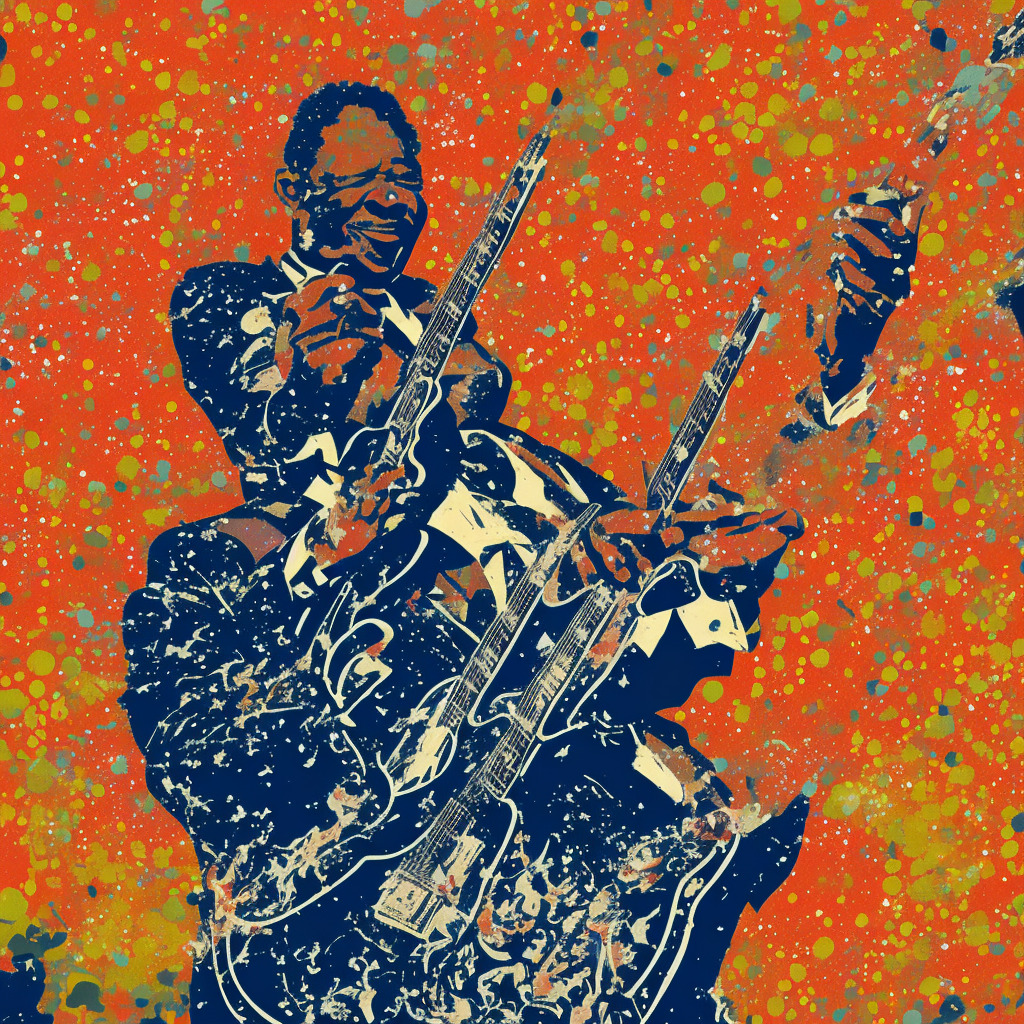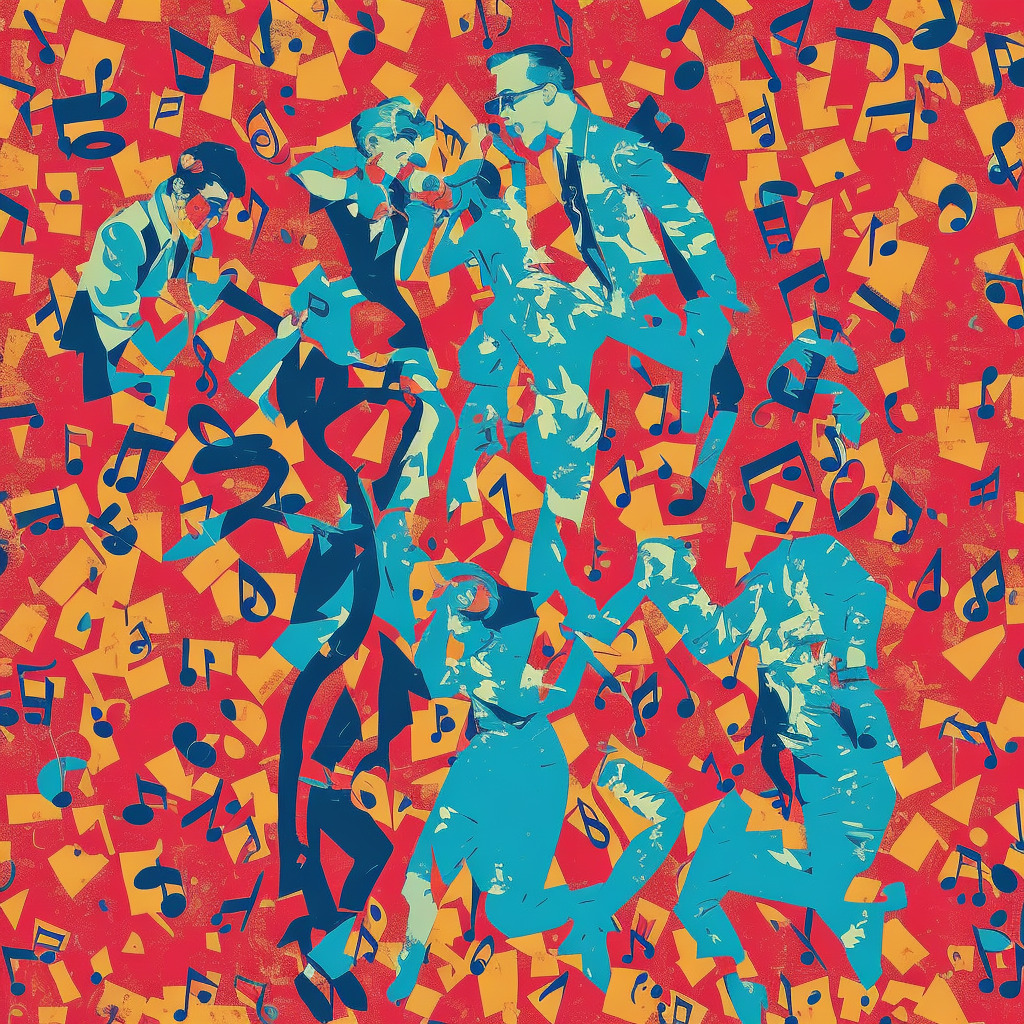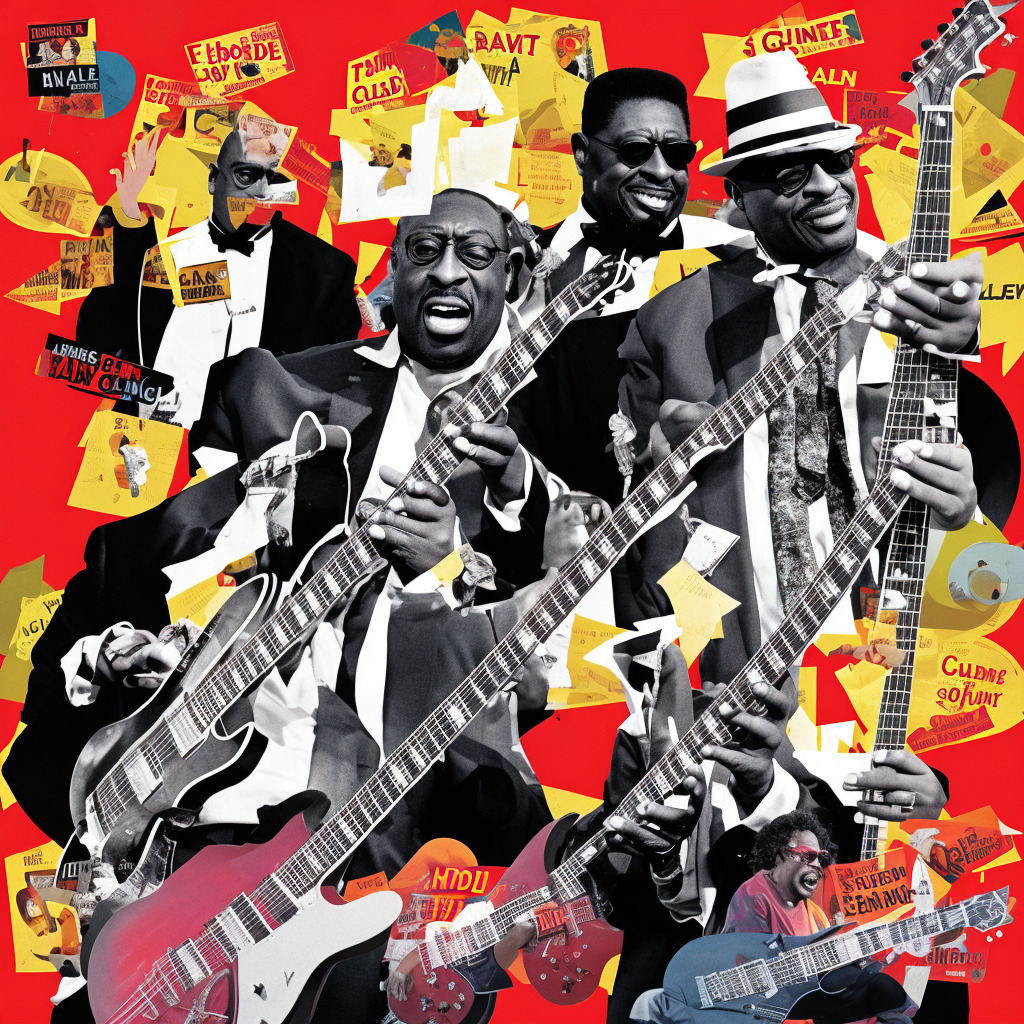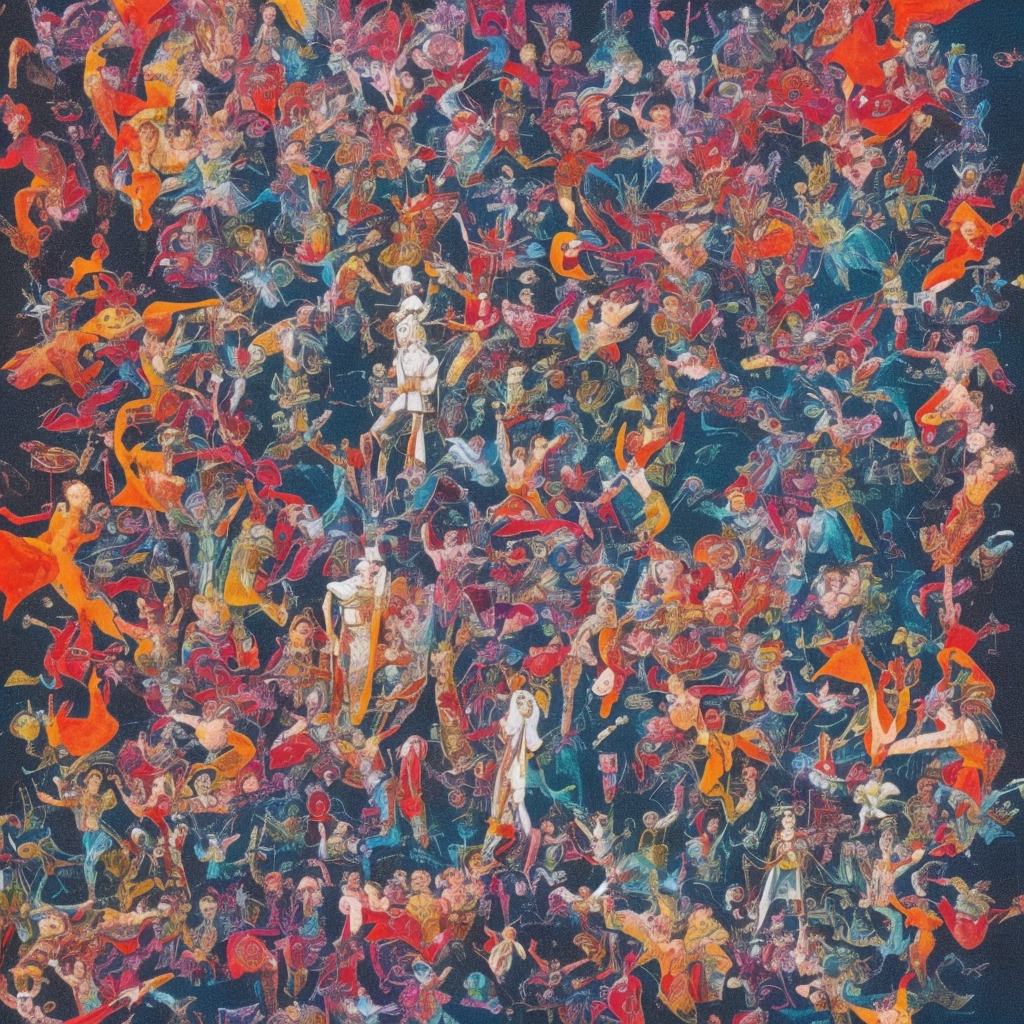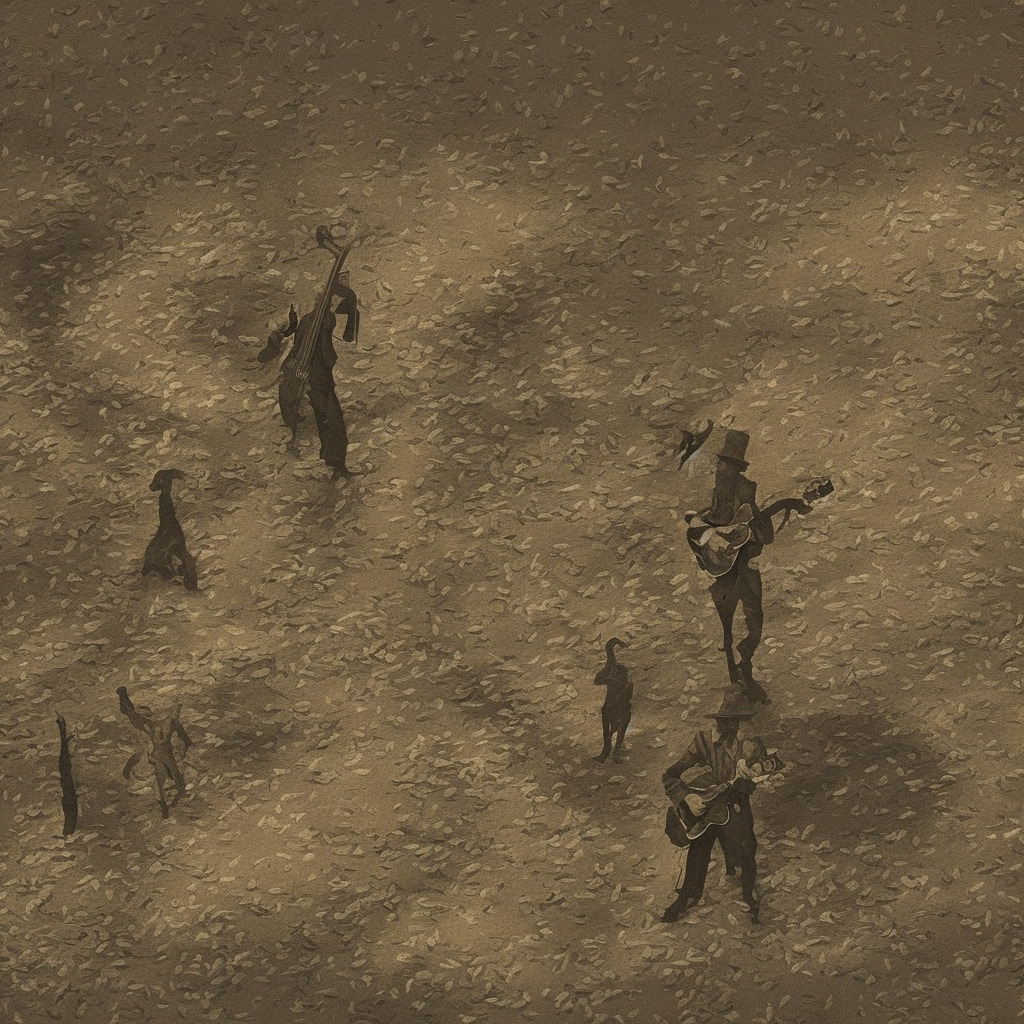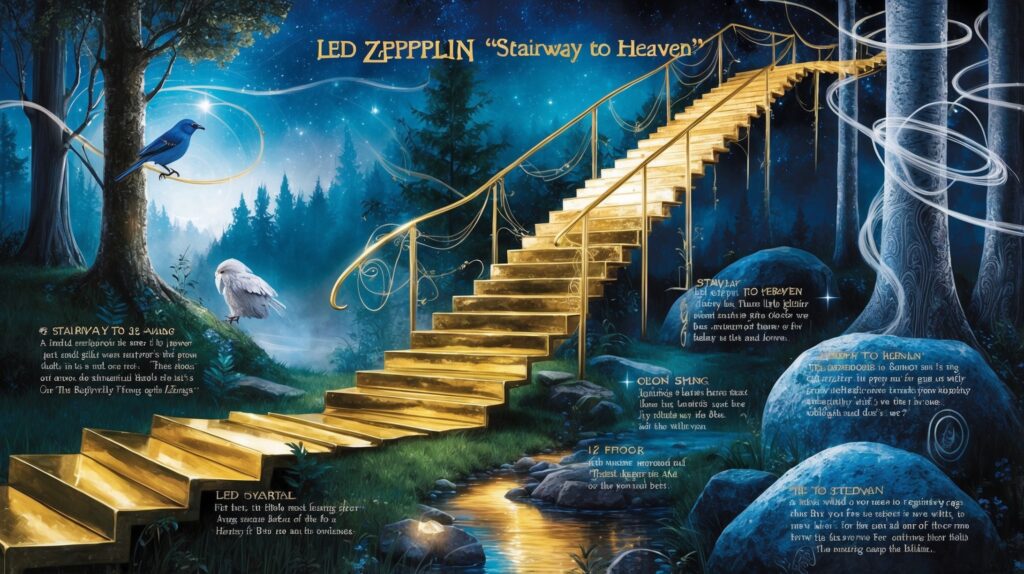?Did you know that B.B. King’s “The Thrill Is Gone” was inspired by a breakup?? This iconic blues anthem still strikes a chord after 50+ years! ?️? #BBKing #BluesClassic #MusicTrivia #TheThrillIsGone Read about it: tinyurl.com/5hb6ssn6
Riding the Blues Wave: A Look into B.B. King’s Iconic Work
Dive into B.B. King’s blues legacy and timeless talent, as his iconic tracks like “The Thrill Is Gone” continue to captivate and inspire generations of musicians.
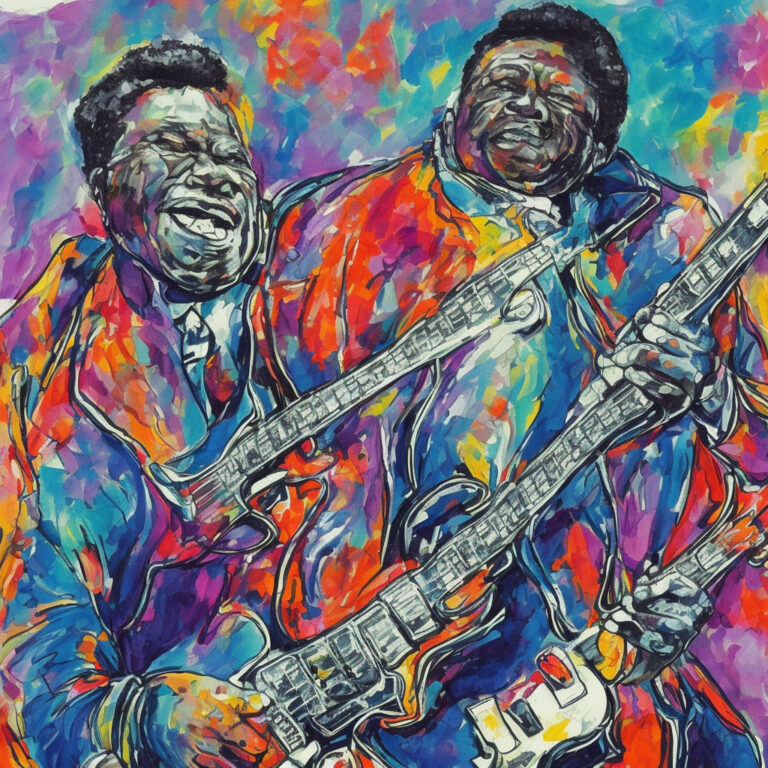
B.B. King, born Riley B. King on September 16, 1925 in Itta Bena, Mississippi, is considered one of the most influential blues musicians of all time. Known as the “King of the Blues,” he has inspired countless musicians, guitarists, and singers throughout his career, which spanned over 70 years. B.B. King’s talent as a guitarist and his undeniable charisma shaped the blues genre, making him a true icon of American music.
One of his most renowned songs, “The Thrill Is Gone,” released in 1969, showcases B.B. King’s prowess as a blues musician. Featuring his signature soulful vocals and skillful guitar playing, the song became a major success and remains a classic in the blues repertoire. Its mournful lyrics about lost love and heartache resonate with audiences even today, proving the timelessness of his music.
Throughout his career, B.B. King was known to collaborate with many musicians, such as Eric Clapton, U2, and John Mayer. While his dedication to the blues genre was unwavering, his penchant for collaborating with artists from different musical backgrounds only served to enhance his own musical style. Yet, some critics argue that B.B. King’s frequent collaborations with mainstream artists somewhat dilute the essence of the blues.
However, it’s hard to ignore the accolades he has received throughout his career. B.B. King won 15 Grammy Awards, including the Lifetime Achievement Award in 1987. He was also inducted into the Blues Foundation Hall of Fame in 1980 and the Rock and Roll Hall of Fame in 1987. Furthermore, Rolling Stone magazine named him the third-greatest guitarist of all time in 2003.
In conclusion, B.B. King’s profound impact on the blues genre is unquestionable, and his song “The Thrill Is Gone” is a testament to his remarkable talent. Despite some criticisms of his collaborations, his dedication to the blues, coupled with his numerous awards and accolades, speak volumes about his lasting legacy. B.B. King passed away on May 14, 2015, but his music continues to inspire and captivate audiences around the globe, ensuring that his influence will live on for generations to come.
Chart Chronicles: Climbing to the Peak
Chart Chronicles: B.B. King’s “The Thrill Is Gone” conquers both pop and R&B charts, boasting a 14-week Hot 100 run and a Grammy Hall of Fame induction – a true testament to its timeless appeal and genre-blending magic.

Diving into the chart performance of “The Thrill Is Gone,” it’s evident that this iconic track left an undeniable mark in the music landscape. Released on December 10, 1969, as a single from B.B. King’s album ‘Completely Well,’ the song gained traction and caught the attention of listeners and critics alike.
Upon its release, “The Thrill Is Gone” entered the Billboard Hot 100 chart and gradually climbed the rankings. The track reached its peak chart position at an impressive #15 on June 6, 1970. This accomplishment marked B.B. King’s highest-charting single in his entire career, cementing its status as a true classic.
Furthermore, the song’s acclaim didn’t stop at the pop charts. It dominated the Billboard R&B chart by securing the #3 position. This success attests to the song’s universal appeal and the genre-blending prowess of B.B. King’s masterful musicianship.
One noteworthy trivia tidbit: “The Thrill Is Gone” spent a total of 14 weeks on the Billboard Hot 100 chart, demonstrating its sustained popularity among music enthusiasts. This longevity is a testament to the track’s timeless quality and its ability to resonate with audiences across generations.
Over the years, “The Thrill Is Gone” has received numerous accolades, including a Grammy Hall of Fame induction in 1998, solidifying its place in music history. While the song may not have reached the coveted #1 spot on the charts, its significant impact on the music industry and the hearts of fans worldwide cannot be denied.
Delving Deep into the Soulful Lyrics
The thrill is gone
The thrill is gone away
The thrill is gone baby
The thrill is gone away
You know you done me wrong baby
And you’ll be sorry someday
The thrill is gone
It’s gone away from me
The thrill is gone baby
The thrill is gone away from me
Although I’ll still live on
But so lonely I’ll be
The thrill is gone
It’s gone away for good
The thrill is gone baby
It’s gone away for good
Someday I know I’ll be open armed baby
Just like I know a good man should
You know I’m free, free now baby
I’m free from your spell
Oh I’m free, free, free now
I’m free from your spell
And now that it’s all over
All I can do is wish you well
“The Thrill Is Gone” was released in 1969, a time when the United States was going through a myriad of changes. The Civil Rights Movement, the Vietnam War, and the rise of counterculture were all factors that shaped the music scene during this period. Despite these events, the lyrics of this song do not explicitly pertain to any of them. Instead, B.B. King chose to focus on a deeply personal theme: lost love.
The song revolves around the narrator’s realization that the thrill – that spark, excitement, and passion – has disappeared from his relationship. The repeated lines “The thrill is gone” and “You know you done me wrong baby” evoke a sense of heartache, betrayal, and resignation. This is no surprise, as blues music, which B.B. King is renowned for, often covers themes of love, loss, and betrayal.
While the song does not directly address the issues of its time, it can be argued that the lyrics reflect the disillusionment many people felt with the state of the world. The loss of thrill and excitement about life, love, and even societal movements may have resonated with listeners during this era. Just as the narrator in the song tries to move on from his failed relationship, so too did people attempt to seek a brighter future amidst the chaos of the late 1960s.
At the core of “The Thrill Is Gone” is a universal theme that speaks to the human experience. The heartrending lyrics, combined with B.B. King’s emotive guitar playing and soulful voice, create a timeless piece of music that still resonates today.
A Visual Tribute to “The Thrill Is Gone”
Discover the soul-stirring power of B.B. King’s “The Thrill Is Gone” through fan-made videos, tributes, and artistic interpretations that celebrate the blues legend’s enduring influence.
Although there isn’t an official music video for B.B. King’s iconic song “The Thrill Is Gone,” there is no shortage of visual tributes and fan-made videos that aid in bringing the soul of this classic blues track to life. These videos not only preserve B.B. King’s legacy, but also showcase the creative interpretations and the emotional impact the song has had on its listeners over the years.
One of the most popular fan-made videos is a live performance of “The Thrill Is Gone” at Sing Sing Prison in 1972, a testament to the power of music transcending boundaries and connecting people from all walks of life. In this video, B.B. King’s raw and emotional performance resonates with the inmates, creating a unique and unforgettable moment. This video has garnered over 5 million views on YouTube and stands as an essential live performance in B.B. King’s career.
Another notable tribute is a YouTube video featuring a montage of various live performances from B.B. King’s illustrious career, cut together with interviews and behind-the-scenes footage. The video encapsulates the spirit of “The Thrill Is Gone,” showcasing B.B. King’s unparalleled guitar skills and soulful voice. The video provides a nostalgic look into the impact that the song has had on both the artist and his fans, as well as its enduring influence on the blues genre.
Artistic interpretations of “The Thrill Is Gone” are also abundant, with many musicians uploading their own renditions and covers to platforms such as YouTube. These videos highlight the versatility of the song, as artists from different genres and backgrounds put their unique spin on the classic blues track. Some stand-out covers include singer-songwriter Tracy Chapman’s acoustic version, and the collaboration between guitar legends Eric Clapton and B.B. King himself.
Furthermore, several YouTube creators have used “The Thrill Is Gone” as a backdrop for their own visual narratives, ranging from experimental animation to poignant short films. These videos offer a fresh perspective on the song, demonstrating its ability to transcend its blues roots and inspire artists of various mediums.
In summary, while there may not be an official music video for “The Thrill Is Gone,” the plethora of fan-made videos, tributes, and artistic interpretations provide a fitting visual companion for B.B. King’s timeless classic. As the impact of both the song and the artist continue to reverberate through the generations, these visual tributes serve as a testament to the enduring influence and legacy of B.B. King’s “The Thrill Is Gone.”
The Man Behind the Music: B.B. King’s Compositional Prowess
When it comes to discussing the composer of the iconic song “The Thrill Is Gone,” it’s impossible not to mention the legendary Riley B. King, better known as B.B. King. Born in Mississippi in 1925, King was not only a renowned guitarist, but also a prolific songwriter. Throughout his career, which spanned over six decades, he penned numerous memorable hits that would go on to define the landscape of blues music.
One of B.B. King’s most notable compositions is “Every Day I Have the Blues.” This soulful tune, originally performed by the Memphis-based band The Sparks Brothers in 1935, gained massive popularity when King recorded his own rendition in 1955. The blues icon’s unique approach to the song, which showcased his emotive vocal delivery and signature guitar licks, cemented it as a staple of his live performances throughout his career. In addition to “Every Day I Have the Blues,” King composed “Three O’Clock Blues,” a tune that would become his first major hit when it topped the Billboard R&B charts in 1951. This success served as a testament to King’s talent as a composer and his ability to create music that resonated with audiences everywhere.
A Legacy of Accolades and Appearances
“The Thrill Is Gone”: A timeless blues anthem earning Grammy gold, conquering screens and stages, and inspiring generations of artists across genres.
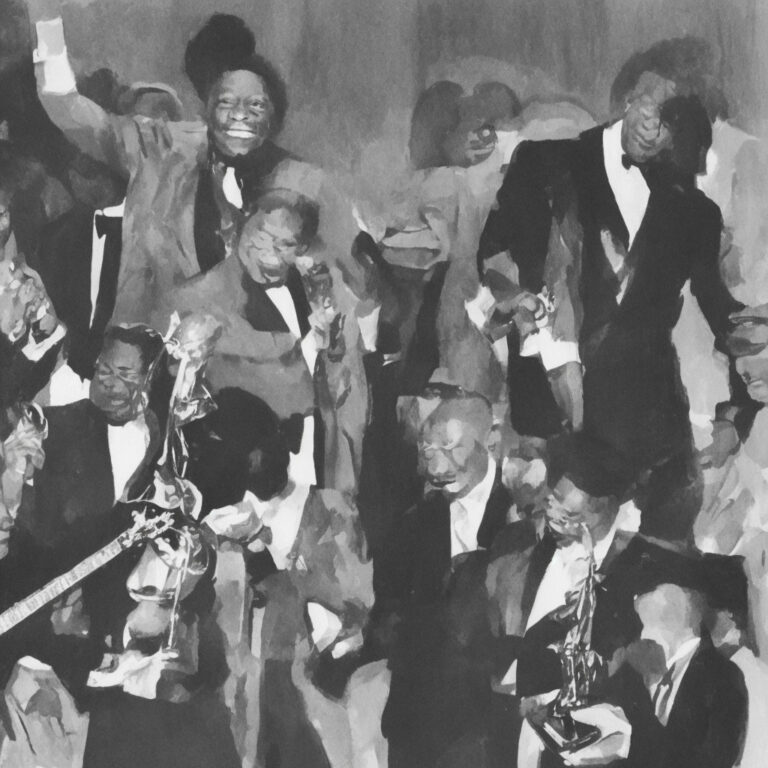
The impact and influence of “The Thrill Is Gone” cannot be overstated, as it has garnered numerous awards, accolades, and a multitude of appearances in various forms of media. Notably, the song received the Grammy Hall of Fame Award in 1998, a testament to its lasting musical significance. It also earned B.B. King his first Grammy, taking home the award for Best Male R&B Vocal Performance in 1970.
“The Thrill Is Gone” has found its way into an array of film, TV, and video game soundtracks, with its melancholic notes echoing through various scenes and scenarios. The song was featured in the 1999 movie “The Hurricane,” which starred Denzel Washington, and the 2014 film “The November Man,” starring Pierce Brosnan. Television-wise, the song was included in an episode of the popular series “The Sopranos” and the Netflix Original series “Lilyhammer,” among others. Furthermore, the tune made its way into the video game realm, appearing in the 2005 release “Driver: Parallel Lines.”
Countless musicians have paid tribute to B.B. King and “The Thrill Is Gone” by creating their own unique covers of the seminal song. One of the most celebrated renditions came in 1993, when the song was masterfully reinterpreted by none other than the Irish rock band U2, accompanied by B.B. King himself. In 2015, an unforgettable performance of the song was delivered by artists such as Gary Clark Jr., Chris Stapleton, and Bonnie Raitt as a tribute to the late B.B. King at the 58th Annual Grammy Awards. The song has also been covered by artists from various genres, including blues legend Etta James, jazz guitarist George Benson, and heavy metal band Machine Head, proving the enduring appeal of “The Thrill Is Gone.”
In sum, “The Thrill Is Gone” has transcended the boundaries of music to become a cultural touchstone, cementing its status as one of the most important and influential blues songs of all time. It is the timeless combination of B.B. King’s emotive voice and his unmistakable guitar playing that continues to captivate audiences and inspire musicians across generations, leaving an indelible imprint on the ever-evolving landscape of music.
Breaking Down the Musical Elements
Diving into the musical structure of “The Thrill Is Gone,” we find a piece that is both accessible to listeners and rich in its technical intricacies. The song is predominantly in the key of B minor, providing a somber and melancholy foundation for the lyrics and melody. Throughout the track, B.B. King’s guitar work showcases the use of the B minor pentatonic scale, which is a common choice among blues musicians for its expressive and soulful sound.
The chord progression of the song is based on a 12-bar blues format, which is a classic framework for many blues songs. However, King adds a unique twist with the inclusion of a descending chromatic line in the chords during the turnaround (bars 9-12). This progression is as follows: Bm7 – Em7 – Bm7 – Gmaj7 – F#7 – Bm7 – Gmaj7 – F#7 – Em7 – Ebm7 – Dmaj7 – Gmaj7 – F#7. This chromatic movement adds a sense of tension and anticipation, leading the listener back to the beginning of the progression and enhancing the overall emotional impact of the song.
As for tempo, “The Thrill Is Gone” clocks in at around 90 beats per minute, maintaining a steady and relaxed pace that allows the listener to fully absorb the guitar licks and solos, as well as the lyrics. The rhythm section provides a simple yet effective foundation with a basic drum pattern and bass line, allowing King’s guitar and vocals to take center stage. The song also features a string section, arranged by Bert de Coteaux, which adds depth and texture to the mix, further enhancing the emotional resonance of the piece.
B.B. King’s guitar playing in “The Thrill Is Gone” is a masterclass in the art of blues soloing. Throughout the song, he employs a mix of slow bends, fast runs, and vibrato to create a sense of tension and release, perfectly complementing the lyrics and chord progression. His use of space and restraint in his solos is equally impressive, allowing the listener to appreciate each note and phrase without overwhelming them with excessive technicality.
In conclusion, the musical structure of “The Thrill Is Gone” is a testament to B.B. King’s prowess as both a guitarist and a songwriter. The song’s combination of a classic blues form, a unique chord progression, and King’s signature guitar style results in a haunting and enduring piece that continues to captivate listeners to this day.

